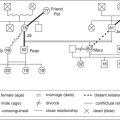Chapter 34 PALLIATIVE AND END-OF-LIFE CARE
INTRODUCTION
Among all the medical advances and increased capability to cure in the last few decades, healthcare lost its way in relation to the fact that people do die and, when they die, they usually want a peaceful and dignified death, preferably at home with their family attending. In response to this not happening, palliative and end-of-life care have become very important and topical issues, particularly in regard to the management of death when it does not come about quickly and smoothly. Palliative and end-of-life care emerged from the realm of cancer care. However, in recent years the knowledge that has been developed in cancer care has been applied in the care of other non-malignant, terminal medical conditions (Parker et al 2005). This type of care recognises that the person is going to die, but the intention is to neither hasten nor postpone death. The focus is holistic care, with the goal of maximising quality of life through support for controlling distressing symptoms such as pain, managing psychosocial stressors and attending to a person’s spiritual needs. The World Health Organization (2009) offers the following definition for palliative care:
THE ROLE OF THE MENTAL HEALTH WORKER
Zarit and Zarit (2007) assert that mental health workers are in a unique position to address palliative care and end-of-life issues. This strong position comes about through our ability to develop a therapeutic relationship. Palliative care specialists have written extensively about the primacy of the therapeutic relationship in palliative care (Canning et al 2007). By already knowing what beliefs, attitudes and values an older person holds, the mental health worker can help maintain dignity, and support decisions that are consistent with these beliefs, attitudes and values. Although mental health workers have a strong focus on psychological and emotional needs, addressing physical needs should not be overlooked and certainly come under the role of being a mental health worker. This could mean assessing physical needs and, if required, arranging for them to be met by the appropriate people.
MENTAL HEALTH ISSUES
Around 30% of people receiving palliative care are reported to be depressed and many feel anxious concerning what may be the outcomes of their illness (Hotopf et al 2002). In describing the experience of getting old and sick, Clarke (2007) suggests breaking down depression into three components:
The breaking down of a diagnosis of depression into these psychological elements will assist in understanding what feelings the older person is experiencing and enable more effective targeting of interventions. The pharmacological and non-pharmacological treatment for depression is covered comprehensively in Chapter 20. Antidepressants, at levels subtherapeutic for depression, are an effective treatment for neuropathic pain and this is something a mental health worker could reasonably expect to encounter (Carr et al 2002). In addition to the standard treatments for depression, older people in a palliative/end-of-life situation require sound and timely information and to be involved as much as possible in the decision-making processes.
Grief and bereavement therapy are well addressed in the literature and there are some therapists who have specialised in this field (Worden 1996). There are three main principles that are followed. The first principle is to promote emotional expression via empathetic responses. Emotions can vary from intense sorrow for losses to anger for being afflicted with the disease. The second principle is based on an understanding that people who are grieving may go through stages of denial and avoidance. These are negative defence mechanisms that need to be challenged in a gradual and gentle way to enable the person to realise the gravity of the situation so they can adjust to it. The third principle is that people need time to adjust and make sense of what is happening to them. This comes about by spending the therapy time discussing, listening and thinking through the issues that are bothering or concerning them.
Some people are prepared to face their mortality and others are not. According to Abbey (2001), it is important to determine how the older person feels about dying and how they may want to die. As a younger person, they may have said things like, ‘Shoot me if I get like that’ (in the case of dementia or some other incurable debilitating disease). However, as people get older, this certainty about not wanting to prolong their life can become less intense, although they may not want to suffer unbearably. In the case where people are prepared to face their mortality, there may be an option to plan end-of-life care well ahead of time, usually in the months leading up to death, rather than in the last few days when it may become more of a crisis situation.
In Australia, there are options for people to make an ‘advance directive’, where a competent older person can stipulate who will be their substitute decision maker if they want to be resuscitated or mechanically ventilated or have any other life-prolonging device used on them. These directives protect the right of the older person to make decisions about their care in the terminal phase, and it removes some of the burden a family may have to grapple with in the face of such difficult decisions. Advice regarding advance directives can be obtained from the office of the Adult Guardian. Another option is to appoint a power of attorney for health to act on the person’s behalf. Each state and territory in Australia has different legislation pertaining to these matters, and it is beyond the scope of this chapter to go into that level of detail, but it would be a sensible approach to be familiar with what options are available in the relevant jurisdiction.
Stay updated, free articles. Join our Telegram channel

Full access? Get Clinical Tree





